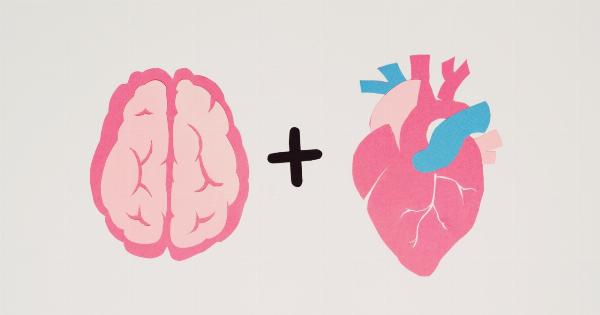In recent years, heart disease has become the leading cause of death worldwide. The accumulation of plaque in the arteries is a major contributing factor to this devastating condition.
However, scientists have been making significant strides in finding innovative solutions to clear blocked arteries and prevent heart attacks. One such breakthrough involves the use of nanoparticles – tiny particles that can effectively target and dissolve arterial blockages.
A Silent Killer: Understanding Arterial Blockages and Heart Attacks
Arterial blockages, also known as atherosclerosis, occur when plaque builds up inside the arteries. This plaque is made up of cholesterol, fat, calcium, and other substances that stick to the arterial walls over time.
As the plaque continues to accumulate, it narrows the arteries, reducing blood flow and oxygen supply to vital organs, including the heart.
In some cases, the plaque buildup can rupture, forming a blood clot that completely blocks blood flow through the artery.
When this happens in a coronary artery – the blood vessels that supply oxygen-rich blood to the heart muscle – it can lead to a heart attack. Heart attacks can cause severe damage to the heart muscle and may even be fatal.
The Promise of Nanoparticles in Artery Clearance
Nanoparticles have emerged as a groundbreaking tool in medicine. These minuscule particles, often measuring less than 100 nanometers, hold tremendous potential for targeted drug delivery and imaging.
In the case of arterial blockages, scientists have developed innovative nanoparticles that can effectively clear plaque from the arteries.
One approach involves the use of nanocarriers, such as liposomes or polymeric nanoparticles, loaded with therapeutic agents.
These nanoparticles are designed to specifically target the plaque in the arteries while minimizing side effects on healthy tissues. The nanoparticles can be engineered to release drugs that break down the plaque or reduce inflammation, promoting arterial clearance and preventing further blockages.
Another approach utilizes nanoparticles coated with antibodies or ligands that recognize and bind to specific markers on the plaque surface.
This targeting mechanism enhances the nanoparticles’ ability to reach and adhere to the blockage, increasing their effectiveness in clearing the arteries.
Enhanced Imaging for Precise Diagnosis and Treatment
Besides their therapeutic potential, nanoparticles can also revolutionize the diagnosis and monitoring of arterial blockages.
Advanced imaging techniques, such as magnetic resonance imaging (MRI) or computed tomography (CT), can be combined with nanoparticles to provide precise and real-time visualization of plaque deposits. This enables healthcare professionals to accurately assess the severity and location of blockages, guiding the selection of the most appropriate treatment option.
For instance, nanoparticles labeled with contrast agents can enhance the visibility of plaque during imaging procedures, allowing doctors to detect even the smallest lesions.
This level of detail helps in determining the most effective course of action, whether it be medication, lifestyle changes, or invasive procedures like stenting or angioplasty.
Overcoming Challenges: The Future of Nanoparticle Research
While nanoparticles hold immense promise for clearing blocked arteries and preventing heart attacks, there are still challenges to overcome. One major hurdle is ensuring the safe delivery of nanoparticles to their target sites in the body.
Nanoparticles need to remain stable and active during circulation to effectively reach and interact with arterial plaque. Scientists are continuously exploring various coating materials and engineering techniques to improve the biocompatibility and stability of nanoparticles.
Another area of ongoing research is optimizing the release of therapeutic agents from nanoparticles. Proper timing and dosage are crucial to maximize their effectiveness in clearing arterial blockages.
By fine-tuning the release kinetics, scientists aim to ensure sustained drug release at the site of the plaque, increasing the chances of successful artery clearance.
Additionally, nanoparticles must undergo rigorous testing to evaluate their long-term safety and effectiveness.
While preclinical studies have shown promising results, further research is needed to fully understand the potential side effects and risks associated with nanoparticle-based therapies.
Future Outlook: Transforming Heart Disease Prevention and Treatment
The development of innovative nanoparticles for clearing blocked arteries represents a significant step forward in the battle against heart disease.
These tiny particles have the potential to revolutionize both the diagnosis and treatment of arterial blockages, ultimately preventing heart attacks and saving countless lives.
As research progresses and scientists overcome the remaining challenges, nanoparticle-based therapies may become a routine part of clinical practice.
Early detection of arterial blockages through advanced imaging combined with targeted and personalized nanoparticle treatments could drastically reduce the burden of heart disease worldwide.
The Road Ahead: A Bright Future for Heart Health
Heart disease continues to pose a significant threat to global health, but the development of innovative nanoparticles offers hope for effective prevention and treatment.
With ongoing advancements in nanoparticle research and technology, the medical community is inching closer to a future where heart attacks are preventable, and lives can be saved.


























